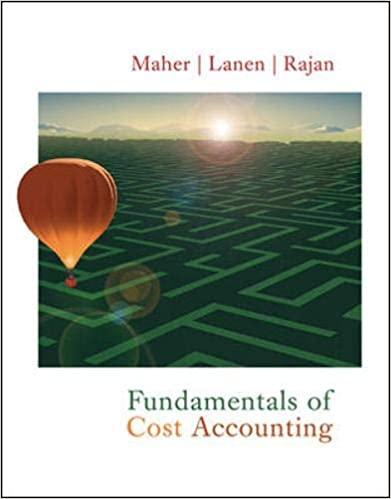




Cook Company processes and packages frozen seafood. The year just ended was Cook's first year of business and they are preparing financial statements. The immediate issue facing Cook is the treatment of the direct labor costs. Cook set a standard at the beginning of the year that allowed two hours of direct labor for each unit of output. The standard rate for direct labor is $30 per hour. During the year, Cook processed 60,600 units of seafood for the year, of which 4,848 units are in ending finished goods. (There are no work-in- process inventories). Cook used 125,000 hours of labor. Total direct labor costs paid by Cook for the year amounted to $3,447,500. Required: a. & b. What was the direct labor price variance and the direct labor efficiency variance for the year? c. Assume Cook writes off all variances to Cost of Goods Sold. Prepare the entries Cook would make to record and close out the variances. d. Assume Cook prorates all variances to the appropriate accounts. Prepare the entries Cook would make to record and close out the variances. Complete this question by entering your answers in the tabs below. Req A and B Reqc Req D What was the direct labor price variance and the direct labor efficiency variance for the year? (Indicate the effect of each variance by selecting "F" for favorable, or "U" for unfavorable. If there is no effect, do not select either option.) Direct labor price variance Direct labor efficiency variance Required: a. & b. What was the direct labor price variance and the direct labor efficiency variance for the year? c. Assume Cook writes off all variances to Cost of Goods Sold. Prepare the entries Cook would make to record and close out the variances. d. Assume Cook prorates all variances to the appropriate accounts. Prepare the entries Cook would make to record and close out the variances. Complete this question by entering your answers in the tabs below. Req A and B Reqc ReqD Assume Cook writes off all variances to Cost of Goods Sold. Prepare the entries Cook would make to record and close out the variances. (If no entry is required for a transaction/event, select "No journal entry required" in the first account field.) View transaction list Journal entry worksheet A B Record the purchase and use of 125,000 hours of direct labor at an actual cost of $3,447,500 and the transfer to work in process at a standard cost of $30 per hour. Note: Enter debits before credits. Event General Journal Debit Credit 1 Required: a. & b. What was the direct labor price variance and the direct labor efficiency variance for the year? c. Assume Cook writes off all variances to Cost of Goods Sold. Prepare the entries Cook would make to record and close out the variances. d. Assume Cook prorates all variances to the appropriate accounts. Prepare the entries Cook would make to record and close out the variances. Complete this question by entering your answers in the tabs below. Req A and B Reqc Req D Assume Cook writes off all variances to Cost of Goods Sold. Prepare the entries Cook would make to record and close out the variances. (If no entry is required for a transaction/event, select "No journal entry required" in the first account field.) View transaction list Journal entry worksheet Record the closure of direct labor cost variances to Cost of Goods Sold. Note: Enter debits before credits. General Journal Debit Credit Event 2 Required: a. & b. What was the direct labor price variance and the direct labor efficiency variance for the year? c. Assume Cook writes off all variances to Cost of Goods Sold. Prepare the entries Cook would make to record and close out the variances. d. Assume Cook prorates all variances to the appropriate accounts. Prepare the entries Cook would make to record and close out the variances Complete this question by entering your answers in the tabs below. Req A and B Reqc Req D Assume Cook prorates all variances to the appropriate accounts. Prepare the entries Cook would make to record and close out the variances. (If no entry is required for a transaction/event, select "No journal entry required" in the first account field.) View transaction list Journal entry worksheet Record the purchase and use of 125,000 hours of direct labor at an actual cost of $3,447,500 and the transfer to work in process at a standard cost of $30 per hour. Note: Enter debits before credits. General Journal Debit Credit Event 1 Required: a. & b. What was the direct labor price variance and the direct labor efficiency variance for the year? C. Assume Cook writes off all variances to Cost of Goods Sold. Prepare the entries Cook would make to record and close out the variances. d. Assume Cook prorates all variances to the appropriate accounts. Prepare the entries Cook would make to record and close out the variances. Complete this question by entering your answers in the tabs below. Req A and B Reqc ReqD Assume Cook prorates all variances to the appropriate accounts. Prepare the entries Cook would make to record and close out the variances. (If no entry is required for a transaction/event, select "No journal entry required" in the first account field.) View transaction list Journal entry worksheet Record the closure of direct labor cost variances to Cost of Goods Sold and Finished Goods Inventory. Note: Enter debits before credits. General Journal Debit Credit Event 2











